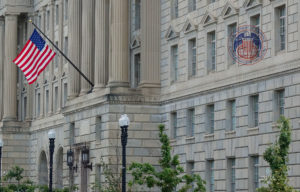News & Insights
State and Commerce Departments Publish Long-Awaited Proposed Rules for U.S. Export Controls on Firearms, Ammunition and Related Equipments
On May 24th, the Commerce Department’s Bureau of Industry and Security (“BIS”) and the State Department’s Directorate of Defense Trade Controls (“DDTC”) published the long-awaited proposed rules for the export control of firearms, guns, ammunition and related articles under the Export Administration Regulations (“EAR”) and the International Traffic in Arms Regulations (“ITAR”). These are just proposed rules, and the BIS and the DDTC will be accepting public comments from interested members of the public until July 9, 2018.
The proposed rules are part of the overall U.S. export control reform process, which was initiated in 2009 to modernize, streamline and harmonize the two primary sets of U.S. regulations. Prior to 2009, U.S. strategic partners and allies were beginning to design out U.S. content and technology from their products in an effort to avoid the applicability of the burdensome U.S. export and reexport rules. This put the U.S. at a distinct competitive disadvantage and compromised the U.S. position as a global leader in new technological developments. Accordingly, the export control reform process identified items that no longer warranted control under the ITAR, shifted those items from the ITAR to the EAR, and harmonized key terms and concepts in both the ITAR and the EAR. The DDTC and the BIS revised the U.S. Munitions List (“USML”) and the Commerce Control List (“CCL”), and many items and technologies were transferred to the CCL.
The last remaining categories that required review and revision under the export control reform were USML Categories I, II and III which are covered by the proposed rules. The proposed rules were reportedly originally drafted during the Obama Administration but were not released as a result of several tragic events involving mass shootings in the United States. The Trump Administration reportedly made very few changes to the original drafts, which were published in the Federal Register last week.
In drafting these proposed rules, the BIS and the DDTC focused on identifying the types of articles that are now controlled under the ITAR that are either inherently military and warrant control on the USML or possess parameters or characteristics that provide a critical military or intelligence advantage to the U.S. and are almost exclusively available from the United States. If an article was found to satisfy one or both of these criteria, then it would remain on the USML. If neither of the criteria were satisfied, then the item would be transferred from the USML to the CCL under newly created Export Control Classification Numbers (“ECCNs”). The items shifted from the USML to the CCL were determined to be essentially commercial items widely available in retail outlets and less sensitive military items.
Under the DDTC’s proposed rule, the following items would remain on the U.S. Munitions List and subject to the ITAR:
- Firearms that fire caseless ammunition.
- Fully automatic firearms up to .50 caliber.
- Firearms specially designed to integrate fire control, automatic tracking or automatic firing systems.
- Fully automatic shotguns.
- Developmental guns and armament funded by the DoD and their specially designed parts and components.
- Silencers, mufflers, sound suppressors and specially designed parts and components.
- Riflescopes and other firearms sighting devices with night vision or infrared capabilities (controlled under USML Category XII).
- Barrels, receivers, bolts, bolt carriers, slides or sears specially designed for USML Category I firearms.
- High capacity magazines, parts and components to convert a semi-automatic firearm into a fully automatic firearm, and accessories or attachments specially designed to automatically stabilize aim (other than gun rests) or for automatic targeting.
- Ammunition specifically enumerated in USML Category III, including development ammunition funded by the DoD.
- Technical data and defense services associated with the foregoing items.
In addition, ITAR brokering requirements will continue to apply to items that are transferred to the EAR and that are also on the U.S. Munitions Import List (“USMIL”) for permanent import purposes.
Under the BIS’ proposed rule:
- Firearms, ammunition and related articles, software and technology that are not specifically enumerated in Categories I, II or III of the USML—generally, these items that typically have civil, recreational, law enforcement or other non-military applications. These items will be classified in the following ECCNs: 0A501; 0A502; 0A503; 0A504; 0A505; 0A602; 0B501; 0B505; 0B602; 0D501; 0D505; 0D602; 0E501; 0E502; 0E504; 0E505.
- Engines for self-propelled guns and howitzers, tooling and equipment for the production of items in Category II, and testing equipment for Category II items will transfer to the CCL.
- Antique firearms manufactured before 1890 and reproductions, muzzle loading black powder firearms (except those designs based on centerfire weapons of a post-1937 design), BB guns, pellet rifles, paint ball and all other air rifles will be classified as EAR99.
- The following ECCNs would be removed altogether from the CCL: 0A918 (items would be transferred to 0A501); 0A984 (items would be transferred to either 0A502 or 0A505); 0A985 (items would be shifted to 0A503); 0A986 (items would be transferred to 0A505.c); 0A987 (items would be shifted to 0A504); 0B986; 0E918; 0E984; 0E987.
- A license from the BIS would be required to export or reexport firearms or weapons transferred from the ITAR to the EAR to all countries (with the exception of guns and armament manufactured between 1890 and 1919, which would not require a license for Canada).
- Exporters or reexporters of 0A501 firearms would be required to obtain a copy of the import permit issued by the destination country prior to submitting a license application to the BIS.
- Exports of arms under license exceptions LVS, TMP, RPL, STA or GOV or a license would trigger Wassenaar Arrangement and United Nations reporting.
- Electronic Export Information (“EEI”) filings in the Automated Export System would be required for export of firearms transferred from the USML to the CCL, including exports to Canada. EEI filings for firearms would also require the submission of additional data elements, such as serial numbers, make, model and caliber of the weapons.
- Temporary imports into the United States would require the additional filing requirements that would allow for the tracking of temporary imports and their subsequent exports for items that are both subject to the EAR and the USMIL.
- Exporters would be subject to expanded recordkeeping requirements under the EAR, such as maintaining serial numbers, makes, models and caliber of any firearm controlled in 0A501 and 0A502.
The BIS also posted a publication on its website entitled “Categories I-III Rules: Myths vs. Facts” which explains that the transfer of certain firearms to the EAR does not deregulate the export of firearms as the BIS will continue to require U.S. Government authorization for exports and reexports. In addition, the BIS noted that the proposed changes will not alter permanent import controls that are enforced by the Bureau of Alcohol, Tobacco, Firearms and Explosives (“ATF”) under the U.S. Munitions Import List. See https://www.bis.doc.gov/index.php/forms-documents/federal-register-notices-1/2220-cats-i-iii-myths-v-facts-posted-5-24-18/file.
You can find the Proposed Rules published in the Federal Register as follows:
- DDTC Proposed Rule: file:///C:/Users/Owner/Downloads/2018-10366%20-%20USML%20-2083%20FR%2024198.pdf.
- BIS Proposed Rule: https://www.bis.doc.gov/index.php/forms-documents/federal-register-notices-1/2218-83-fr-24166-commerce-cat-i-iii-firearms-proposed-rule-5-24-18/file.
Manufacturer, retailers, exporters and importers should review the Proposed Rules carefully, assess how they may impact their operations and international activities, and consider filing public comments with the DDTC and/or BIS on or before July 9, 2018. If you have any questions regarding the DDTC and BIS proposed rules, U.S. export controls or other international trade issues, please contact Melissa Proctor at Miller Proctor Law PLLC (melissa@millerproctorlaw.com).
News & Insights

BIS Issues Notice Of Proposed Rulemaking For Certain Foundational Technologies
Today, the Commerce Department’s Bureau of Industry and Security (BIS) issued its notice of proposed rulemaking for certain foundational technologies and seeks public comments on the technologies that should be considered for additional export controls under the Export Administration Regulations

Who Will Blink—U.S. or China? U.S. Proposes to Retaliate against China’s Retaliatory Measures
The U.S. appears to be moving deeper into its trade dispute with China. Late in the day on July 11th, the U.S. Trade Representative (USTR) announced that the United States may impose additional 10% ad valorem duties on an entirely


